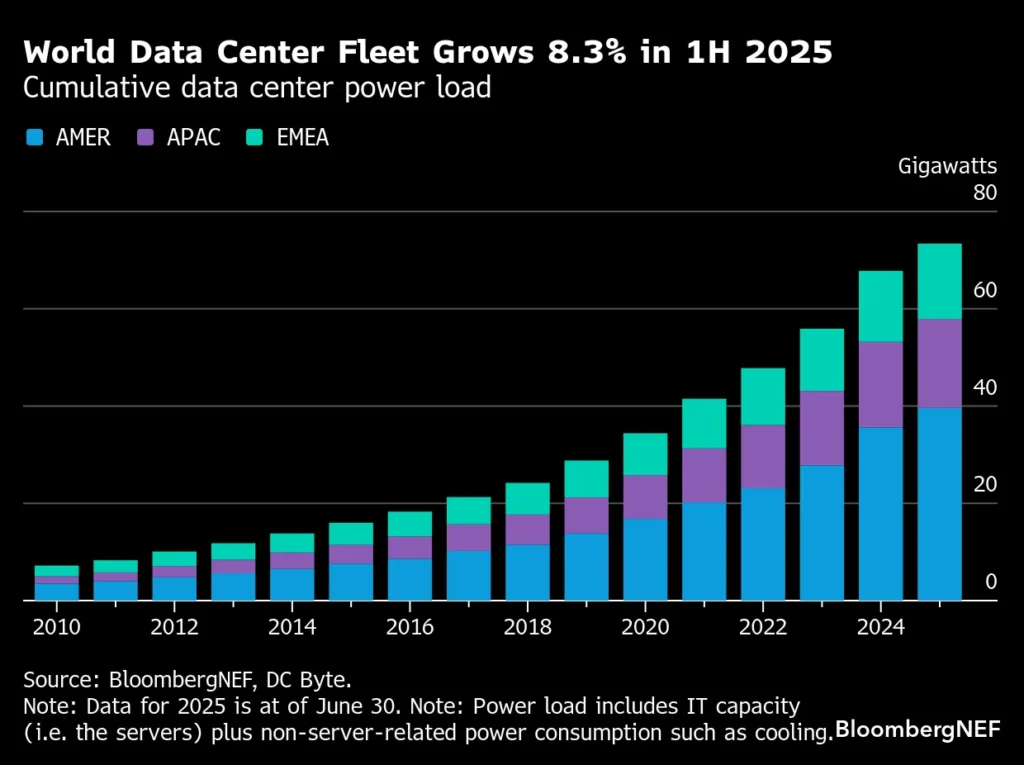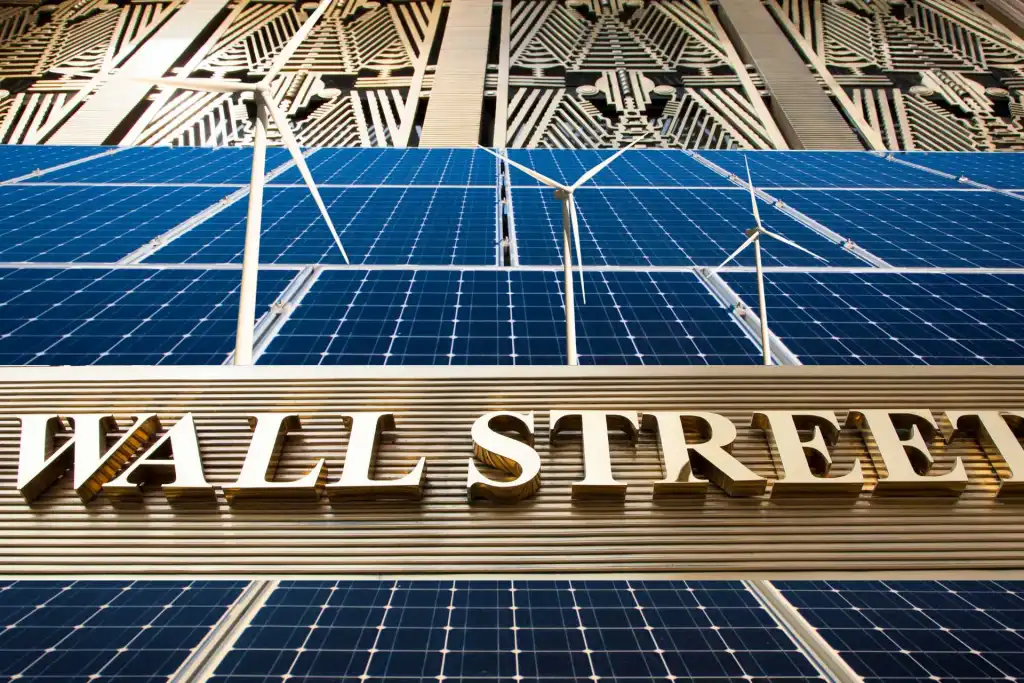Wall Street Is Reframing Climate Finance: New York Climate Week has never been bigger — or more telling about the shifting priorities of global finance. As hundreds of investors, bankers, and policymakers descended on Manhattan for one of the most significant climate-focused events of the year, a subtle but powerful narrative shift emerged: climate finance is no longer just about cutting emissions — it’s about securing energy for a rapidly evolving economy.
Bankers and financiers interviewed by Bloomberg were quick to emphasize a new priority that is reshaping how Wall Street approaches the climate transition: financing the massive surge in energy demand needed to support economic growth, especially the exponential rise in artificial intelligence (AI) and data infrastructure. And while sustainability and net-zero commitments remain part of the conversation, they are no longer the central focus. Instead, energy security, reliability, and supply have become the new watchwords.
This pivot reflects a deeper transformation in global capital markets. With AI data centers, electric vehicles, and green industries consuming unprecedented levels of electricity, financiers now see opportunity — and necessity — in investing not just in renewable projects, but also in large-scale infrastructure capable of delivering continuous, affordable energy.
Climate Finance 2.0: From Emissions Cuts to Energy Capacity
For much of the past decade, climate finance was defined by decarbonization — investments aimed at cutting greenhouse gas emissions, reducing fossil fuel exposure, and aligning portfolios with Paris Agreement targets. Banks proudly touted their progress in “decarbonizing loan books,” setting ambitious net-zero timelines and divesting from high-emissions sectors.
But the mood at this year’s Climate Week suggests that narrative is changing. Bankers are now framing climate finance as a dual mission: supporting the energy transition while also ensuring that the economy — particularly energy-hungry technologies — has enough power to thrive.
“AI is transforming everything — and it’s also consuming staggering amounts of energy,” one investment executive told Bloomberg. “If we don’t finance the infrastructure to meet that demand, none of our sustainability goals will matter because the economy won’t function.”
The AI Effect: Why Energy Demand Is Skyrocketing
Artificial intelligence is emerging as one of the largest new drivers of global electricity demand. Data centers powering large language models, cloud services, and machine learning operations require vast amounts of energy — much of it continuous and reliable, not intermittent.
- According to industry estimates, global data center electricity demand could triple by 2030, driven largely by AI applications.
- The International Energy Agency (IEA) projects that data centers and AI could consume more than 4% of global electricity by the end of the decade — roughly equivalent to the power use of Japan.
This surge is forcing financiers to rethink their strategies. Renewable energy alone — while essential — cannot yet provide the round-the-clock power that AI systems demand. As a result, Wall Street is increasingly funding grid modernization, storage capacity, nuclear projects, and even cleaner fossil fuel infrastructure as part of a broader “energy security” approach.
Energy Security: The New Climate Finance Buzzword
Energy security — once associated primarily with geopolitical stability — is now a key pillar of climate finance strategy. Bankers argue that a resilient, diversified, and abundant energy supply is crucial for both climate goals and economic growth.
This shift does not necessarily mean a retreat from sustainability. Instead, it reflects a more pragmatic approach to the transition. While decarbonizing portfolios remains a long-term objective, many financiers are prioritizing investments that expand capacity quickly, even if they include lower-carbon fossil projects or transitional fuels.
“Investors are realizing that you can’t decarbonize a system that isn’t stable,” said one senior banker. “Energy security is the foundation — and climate goals must be built on top of that.”

What This Shift Means for the Future of Climate Finance
The evolving narrative on Wall Street has significant implications for the future of climate-related investment:
1. More Capital for Infrastructure
Expect to see larger flows of capital toward grid upgrades, storage solutions, transmission lines, and next-generation power plants — not just solar and wind farms.
2. A Bigger Role for Transitional Energy
Investments in natural gas, nuclear, and carbon capture projects may gain renewed momentum as part of “bridging” strategies to balance sustainability with reliability.
3. Revised Climate Metrics
Banks may adopt new performance indicators that account for energy capacity and resilience — not just carbon reduction — when reporting their climate finance activities.
4. Public-Private Collaboration
The scale of investment required to meet future demand will likely drive deeper collaboration between governments, financial institutions, and tech companies.
Conclusion: A New Phase of the Energy Transition
The conversations on Wall Street during New York Climate Week reveal a pivotal moment for global finance. Climate goals are no longer being pursued in isolation — they’re now intertwined with the economic realities of a world powered by AI, digital infrastructure, and electrified industries.
This doesn’t mean decarbonization is off the table. Rather, it signals a maturation of climate finance — one that acknowledges the complexity of the transition and the need to balance emissions goals with reliability, affordability, and growth.
Energy security is becoming the bridge between climate ambition and economic necessity. And for Wall Street, that means a new era of investment — one where powering the future is just as important as protecting the planet.
FAQs Wall Street Is Reframing Climate Finance
1. Why is Wall Street shifting from “climate finance” to “energy security”?
Because the global economy — especially sectors like AI and digital infrastructure — is demanding far more electricity than current systems can supply. Financing clean energy alone is no longer enough; banks now prioritize projects that expand capacity and ensure reliability.
2. Does this mean decarbonization is no longer a priority?
No. Decarbonization remains a long-term goal, but it’s being integrated with energy security considerations. The new approach acknowledges that without reliable power, achieving climate targets is impossible.
3. How is AI influencing climate finance strategies?
AI-driven data centers are significantly increasing global electricity demand. This shift is pushing investors to fund large-scale energy infrastructure — including renewables, grid upgrades, and even transitional fuels — to meet that demand sustainably.
4. What types of projects will attract more investment under this new strategy?
Expect greater investment in grid modernization, long-duration energy storage, nuclear power, carbon capture, and flexible natural gas projects — all seen as critical to balancing climate goals with energy reliability.
5. What does this mean for the future of climate investing?
It means climate finance will become more diversified and pragmatic. Instead of focusing solely on emissions reductions, investors will prioritize a balanced portfolio of projects that deliver clean, secure, and sufficient energy for a growing digital economy.

c1nv0k